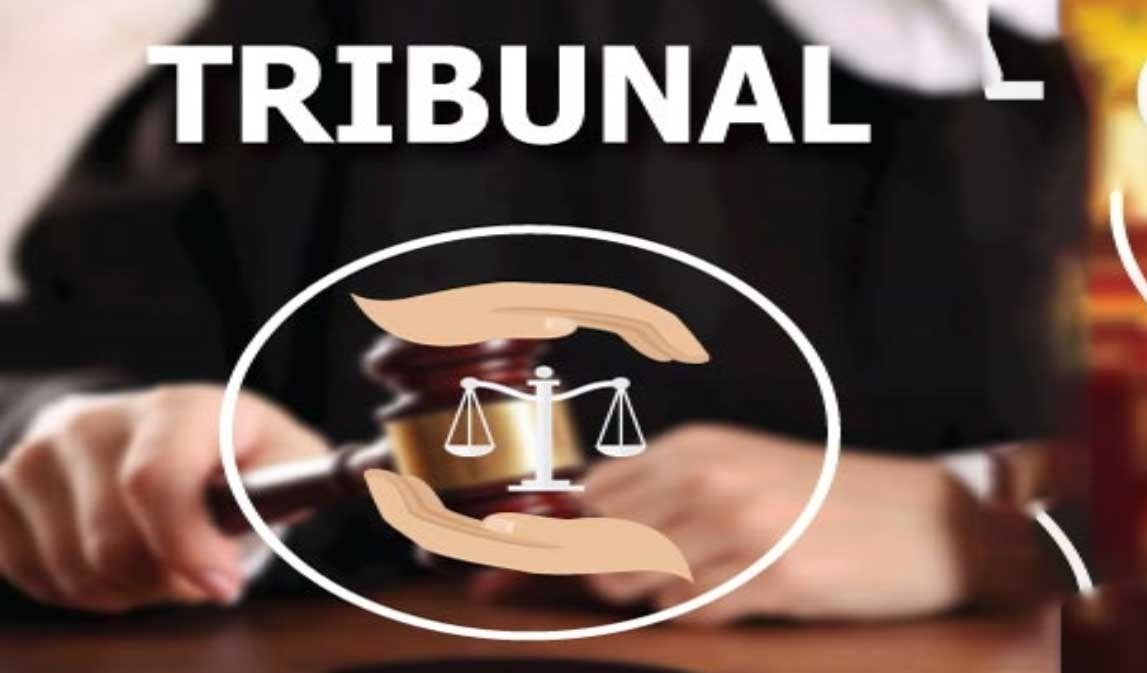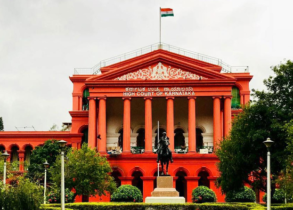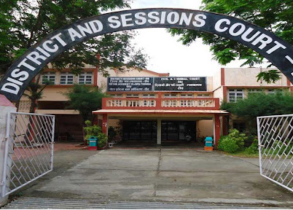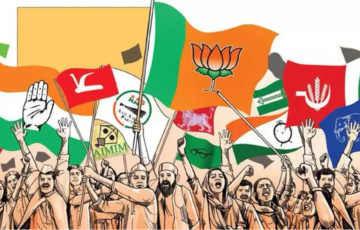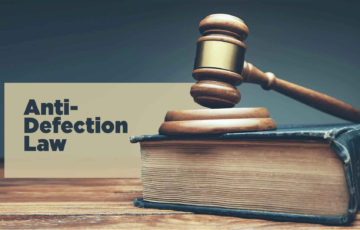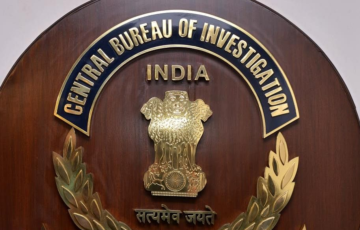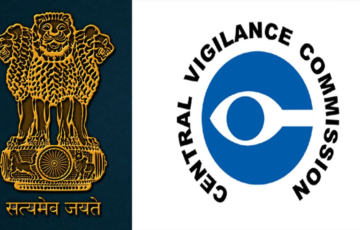TRIBUNALS
Introduction
- The original Indian Constitution did not contain provisions related to tribunals. The establishment of tribunals was introduced through the 42nd Amendment Act of 1976, which added a new part, Part XIV-A, to the Constitution, specifically titled “Tribunals.” This part includes only two articles:
- Article 323A: This article deals with the establishment of administrative tribunals.
- Article 323B: This article deals with tribunals for matters other than administrative issues.
- These two articles provided the constitutional framework for the creation and functioning of various tribunals in India, with Article 323A exclusively focusing on administrative tribunals and Article 323B addressing tribunals for non-administrative matters. These constitutional provisions marked a significant development in the Indian legal system by providing a structured approach to handling specialized disputes through the tribunal system.
Administrative Tribunals
Article 323A of the Indian Constitution empowers the Parliament to establish administrative tribunals for resolving disputes related to the recruitment and conditions of service of individuals in public services. In 1985, the Administrative Tribunals Act was enacted, allowing the Central government to create a Central Administrative Tribunal and states to establish State Administrative Tribunals. These specialized tribunals offer a faster and more cost-effective means of addressing service-related disputes for public servants, reducing the burden on civil courts and high courts.
Central Administrative Tribunal (CAT)
- The Central Administrative Tribunal (CAT) plays a crucial role in resolving recruitment and service-related disputes involving public servants in India. It serves as the primary forum for addressing these issues. Unlike regular civil courts, the CAT is not bound by the procedural rules laid down in the Civil Procedure Code of 1908. Instead, it operates guided by the principles of natural justice.
- The principle of natural justice encompasses fundamental concepts of fairness, such as the right to be heard and the right to a fair and unbiased decision-maker. This approach allows the CAT to be more flexible in its proceedings and decision-making, ensuring that public servants have a fair opportunity to present their cases and that judgments are made impartially.
- Furthermore, Section 17 of the Administrative Tribunals Act of 1985 grants the CAT specific powers. One of the notable powers is that it can exercise the same jurisdiction and authority as a High Court in cases of contempt. This means that the CAT has the authority to address situations where its orders or proceedings are willfully disregarded or obstructed. It can take action and impose penalties similar to what a High Court can do in contempt cases, ensuring the sanctity and authority of its decisions.
Composition
- The CAT is a multi-member body led by a Chairman and Members. Initially, it included a Chairman, Vice-Chairman, and Members, but the provision for the Vice-Chairman was repealed by the Administrative Tribunals (Amendment) Act in 2006.
- Strength: As of 2019, the sanctioned strength of the CAT consists of one Chairman and 65 Members.
- Appointment of CAT Members
- Appointment Process: Members of the CAT are appointed by the President of India and are selected from both the judicial and administrative branches.
- Selection Committee: Appointments are based on the recommendations of a high-powered selection committee. This committee is led by a current Supreme Court Judge chosen by the Chief Justice of India.
- Approval: Appointments are made with the permission of the Appointments Committee of the Cabinet, following the concurrence of the Chief Justice of India.
- Tenure of CAT Members: Members of the CAT serve for a five-year term or until they reach the age of 65 in the case of the Chairman and 62 in the case of Members, whichever comes first.
Jurisdiction
- The Central Administrative Tribunal (CAT) exercises original jurisdiction in addressing recruitment and all service matters concerning public servants under its purview. Its jurisdiction covers several categories, including the following:
- Covered by CAT’s Jurisdiction:
- All-India services.
- Central civil services.
- Civil posts under the Central government.
- Civilian employees of defense services.
- Not Covered by CAT’s Jurisdiction:
- Members of the defense forces.
- Officers and servants of the Supreme Court.
- Secretarial staff of the Parliament.
- Initially, appeals against CAT orders could only be filed in the Supreme Court, bypassing lower courts. However, in the Chandra Kumar case (1997), the Supreme Court declared this restriction on the high courts’ authority as unconstitutional, emphasizing that judicial review is a fundamental aspect of the Constitution.
- As a result of this ruling, appeals against CAT orders are now heard by the division bench of the relevant high court. This means that an aggrieved public servant cannot directly approach the Supreme Court against a CAT order without first seeking redress through the appropriate high court. This change in the appellate process ensures a more streamlined and hierarchical approach to seeking legal remedies and enhances the role of high courts in reviewing CAT decisions.
Functioning of Central Administrative Tribunal
- Specialized Body: The Central Administrative Tribunal consists of Administrative Members and Judicial Members who possess specialized knowledge in administrative and legal matters. This expertise allows them to provide swift and effective justice in the cases they handle.
- Bench Distribution: The CAT operates with 18 principal benches and 21 circuit benches throughout the country. This extensive bench network ensures that cases can be heard and resolved efficiently in various regions.
- Principal Bench: The Central Administrative Tribunal Principal Bench primarily deals with cases related to the government of the National Capital Territory of Delhi.
- Contempt Jurisdiction: The CAT is empowered with the same authority and jurisdiction to address cases of contempt of court as a High Court. This authority allows the CAT to maintain the integrity and dignity of its proceedings.
- Representation Options: Petitioners have the choice to appear before the Central Administrative Tribunal either in person or with the assistance of a legal practitioner. This flexibility ensures that individuals can access justice according to their preferences and needs.
- Procedural Autonomy: The CAT possesses the authority to establish its own procedural and operational norms. This autonomy enables the tribunal to develop and implement processes that align with its specialized objectives and the efficient resolution of cases.
State Administrative Tribunals (SATs)
- The Administrative Tribun Act of 1985 allows the Central government to establish SATs upon the request of state governments. As of now, SATs were initially established in nine states: Andhra Pradesh, Odisha, Karnataka, Maharashtra, West Bengal, Kerala, Madhya Pradesh, Himachal Pradesh, and Tamil Nadu. Some of these SATs were subsequently abolished.
- SATs, like the Central Administrative Tribunal (CAT), exercise original jurisdiction in matters related to recruitment and service issues concerning state government employees.
- The Chairman and Members of the SATs are appointed by the President of India after consultation with the Governor of the concerned state.
- The Administrative Tribunals Act also includes provisions for the creation of Joint Administrative Tribunals (JATs) to serve two or more states. A JAT exercises the same jurisdiction and powers as administrative tribunals for the participating states.
- Just like the SATs, the Chairman and Members of a JAT are appointed by the President after consultation with the Governors of the concerned states.
Difference between Courts and Tribunals
| Aspect | Courts | Tribunals |
| Purpose | Handle a wide range of legal disputes, including civil, criminal, administrative, and constitutional matters. | Specialized bodies created to address specific types of disputes, such as administrative, tax-related, labor, or environmental matters. |
| Composition | Typically presided over by judges with legal expertise and extensive training. | Include legally qualified members and experts in the relevant field, combining legal knowledge with specialized expertise. |
| Procedure
|
Follow formal legal procedures and often use the adversarial process, where parties present their cases. | Have flexibility in procedures and may use informal processes, employing an inquisitorial approach where tribunal members actively gather and evaluate evidence. |
| Speed and Efficiency | Can be slower due to formal procedures and a broad caseload. | Designed to be faster and more efficient, providing quicker resolutions within their specialized domain. |
| Accessibility | Open to all individuals and handle a wide spectrum of cases. | Established to address specific types of cases, making them more accessible for relevant disputes. |
| Appeals
|
Decisions can often be appealed to higher courts, leading to a lengthy appellate process. | Appeals may be limited or subject to specific conditions, and they are often heard by higher tribunals or specialized appellate bodies. |
Tribunals for Other Matters
- Under Article 323B of the Indian Constitution, both the Parliament and state legislatures have the authority to establish tribunals for the adjudication of disputes related to various matters. These matters include:
- Taxation
- Foreign exchange, import, and export
- Industrial and labor
- Land reforms
- Ceiling on urban property
- Elections to Parliament and state legislatures
- Foodstuffs
- Rent and tenancy rights
- This provision grants the legislative bodies the power to set up specialized tribunals to handle disputes and matters in these specific areas, which can help expedite the resolution of related issues and reduce the burden on traditional courts.
Difference between Article 323A and Article 323B
| Aspect | Article 323A | Article 323B |
| Subject Matter | Administrative tribunals for service-related issues | Tribunals for a wide range of matters, including taxation, foreign exchange, industrial disputes, elections, and more. |
| Jurisdiction
|
Service-related disputes, including recruitment and conditions of service for public servants | Disputes related to the specific subjects mentioned in Article 323B. |
| Authority | Exclusive authority of the Parliament. | Both Parliament and state legislatures have the authority to establish tribunals. |
| Examples of Matters | Public service recruitment and conditions
|
Taxation, foreign exchange, industrial disputes, land reforms, elections, foodstuffs, rent, and more. |
UPSC PREVIOUS YEAR QUESTIONS
1. The National Green Tribunal Act, 2010 was enacted in consonance with which of the following provisions of the Constitution of India? (2012)
1. Right to healthy environment, construed as a part of Right to life under Article 21.
2. Provision of grants for raising the level of administration in the Scheduled Areas for the welfare of Scheduled Tribes under Article 275(1).
3. Powers and functions of Gram Sabha as mentioned under Article 243(A).
Select the correct answer using the codes given below:
(a) 1 only
(b) 2 and 3 only
(c) 1 and 3 only
(d) 1, 2 and 3
2. How is the National Green Tribunal (NGT) different from the Central Pollution Control Board (CPCB)? (2018)
1. The NGT has been established by an Act whereas the CPCB has been created by an executive order of the Government.
2. The NGT provides environmental justice and helps reduce the burden of litigation in the higher courts whereas the CPCB promotes cleanliness of streams and wells, and aims to improve the quality of air in the country.
Which of the statements given above is/are correct?
(a) 1 only
(b) 2 only
(c) Both 1 and 2
(d) Neither 1 nor 2

